Modern and Contemporary Art in New York
The MoMA art museum is one of New York’s best places to get lost in art. Throughout the year there are over two dozen unique exhibits showcasing the greatest artist from the modern and contemporary world.
You’ll find works from Salvador Dalí, Pablo Picasso, Van Gogh, Claude Monet, Frida Kahlo, Gustav Kint, Andy Warhol, Keith Harring, Jackson Pollock, and so much more. Below I want to share some of my favorite paintings that I saw during my time at the MoMa art museum.
“What is painting?”
Do you sense how all the parts of a good picture are involved with each other, not just placed side by side? Art is a creation for the eye and can only be hinted at with words.
Pablo Picasso
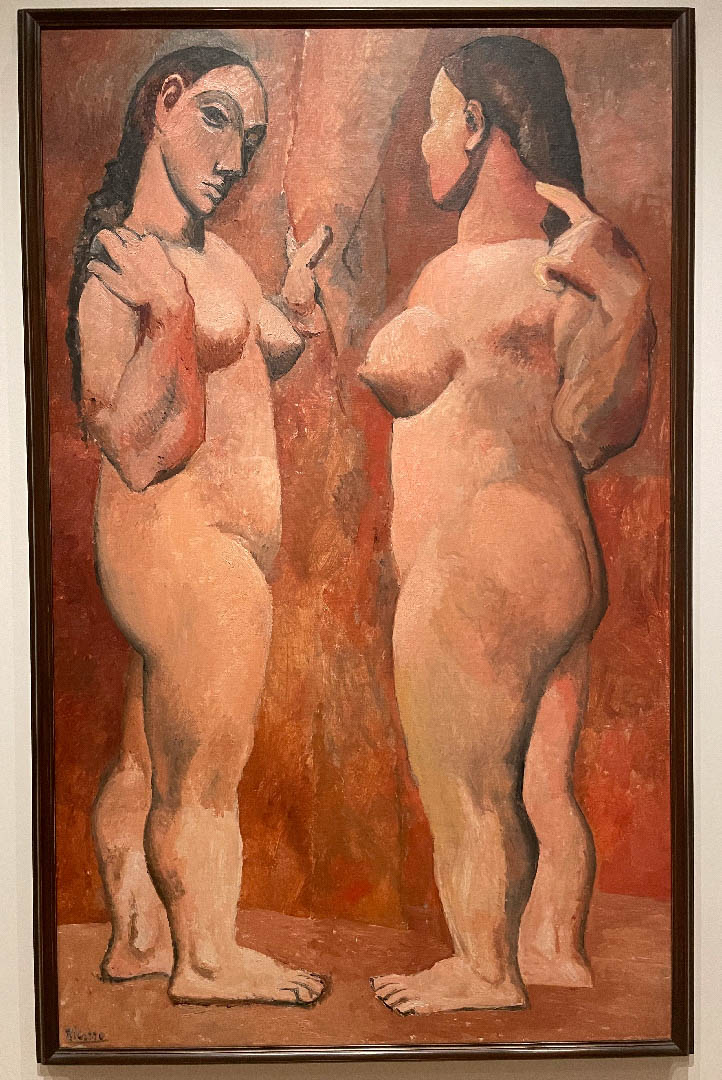
Two Nudes (1940, Oil on canvas)
The terra-cotta shades and heaviness of the figures in Two Nudes derive from Picasso’s interest at the time in the ancient Iberian sculpture of his native Spain. These two women are nearly mirrored images, but the face of the figure on the left bears a strong resemblance to that of the figure on the far left in Les Demoiselles d’Avignon (also on view in his gallery). Like the woman in Demoiselles, with whom she shares a chiseled nose and dark, hollow eyes, the nude seen here holds open a curtain and gazes outward, as though inviting us in.
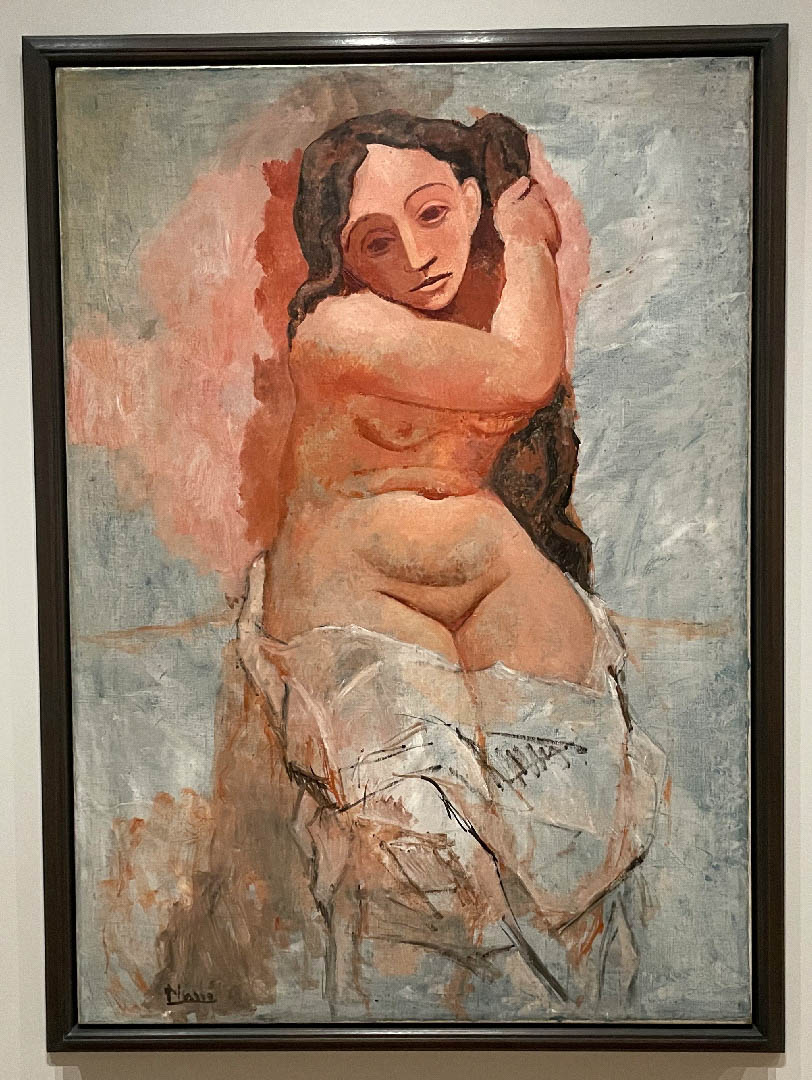
Woman Plaiting Her Hair (1906, Oil on canvas)
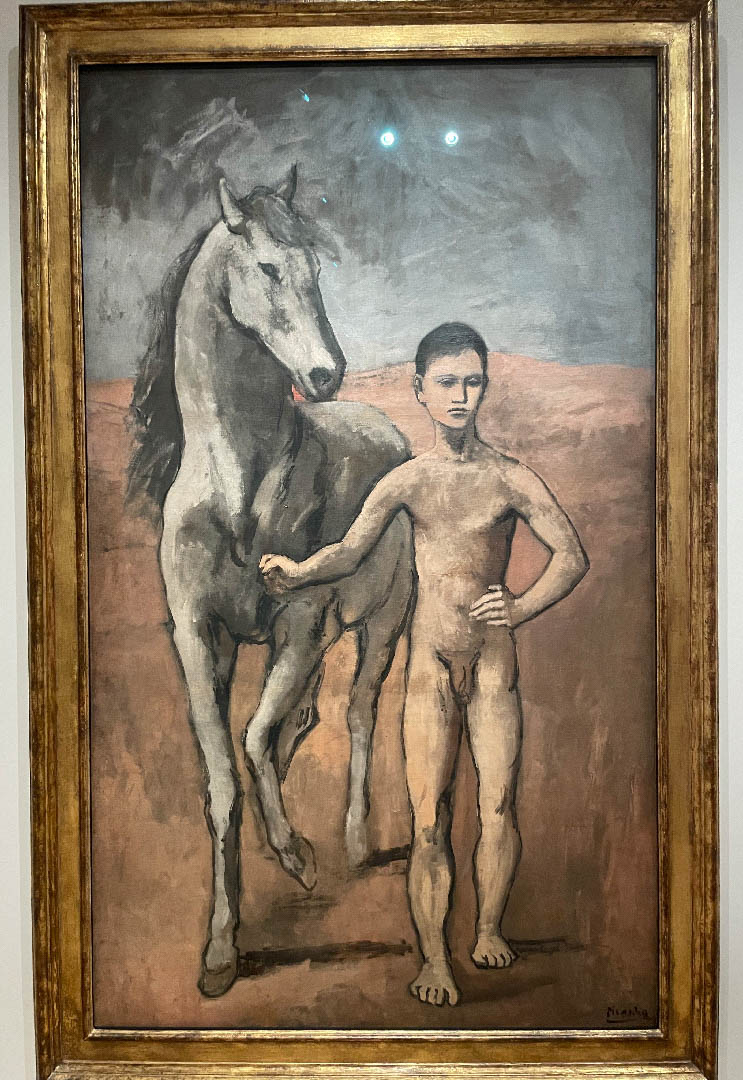
Boy Leading a Horse (1906, Oil on canvas)
Picasso developed this painting from the central motif of an unrealized mural of four mounted riders and a walking figure leading a horse. Determindely striding forward, the youth seen here exudes confidence, his clenched fist compelling the slender steed to follow him without any reins. The vigorous ark-making, relative lack of fine details, and shifting hues of browns and grays were all recent developments in Picasso’s art. But this subdued palette and restrained expressivity would soon be broken by the artist’s Cubist explorations in the coming years, in works that can also be seen in this gallery.
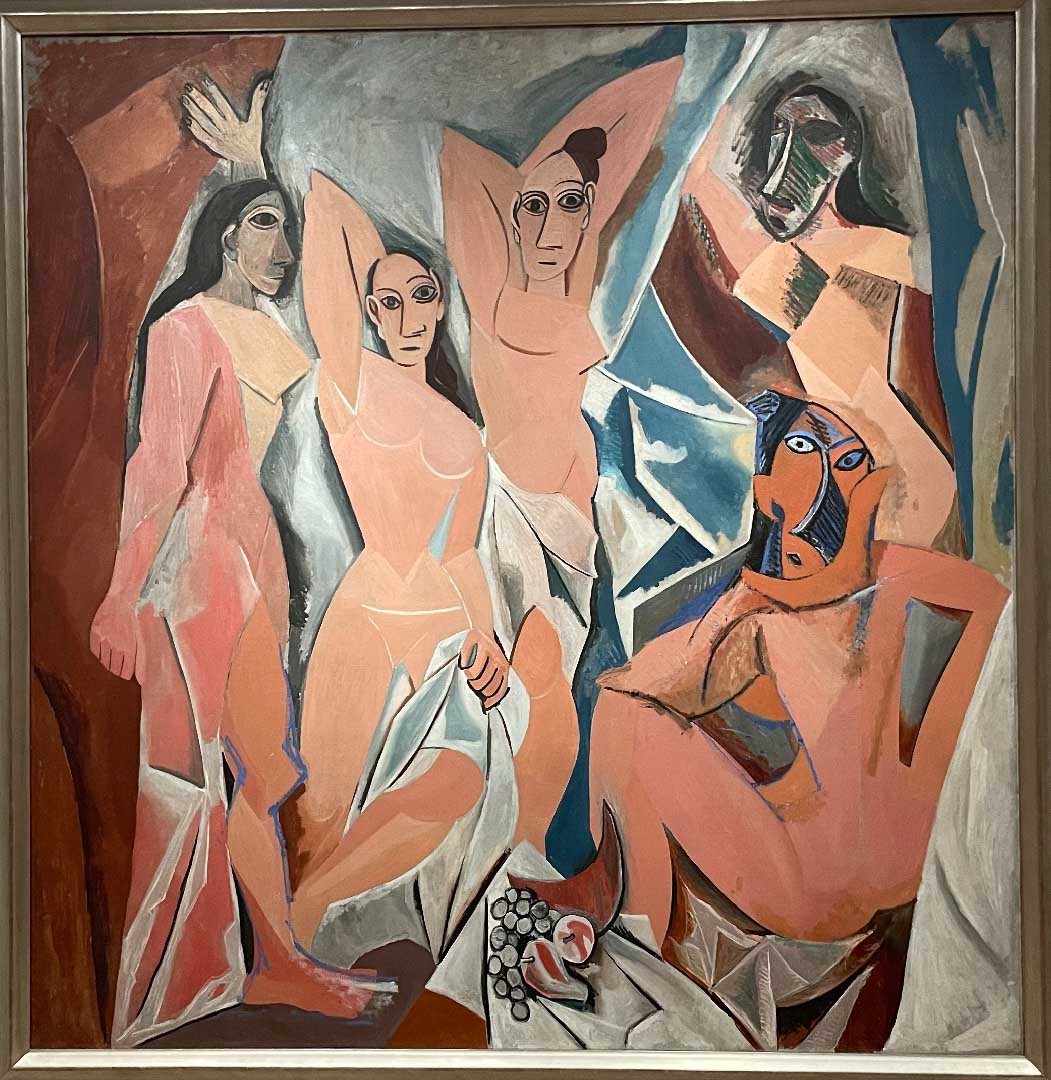
Les Demoiselles d’Avignon (1907, Oil on canvas)
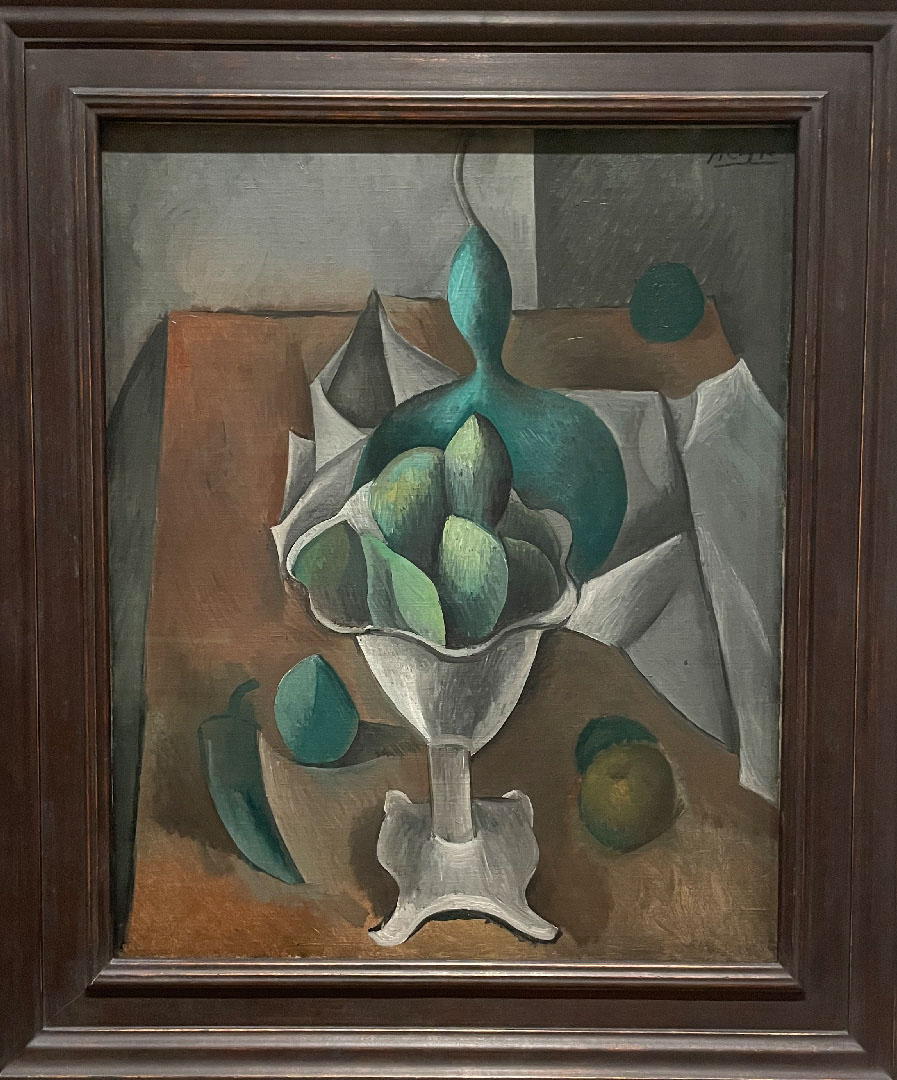
Fruit Dish (1909, Oil on canvas)
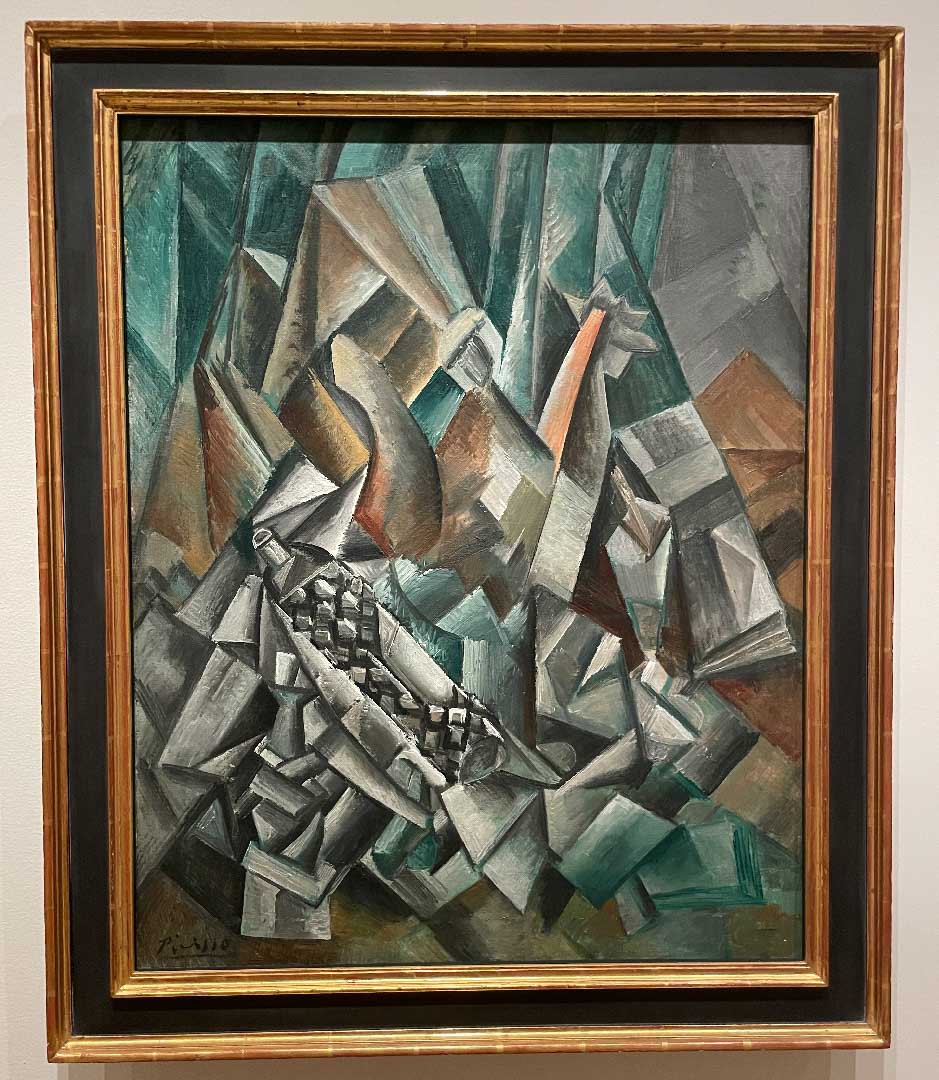
Still Life with Liquor Bottle (1909, Oil on canvas)
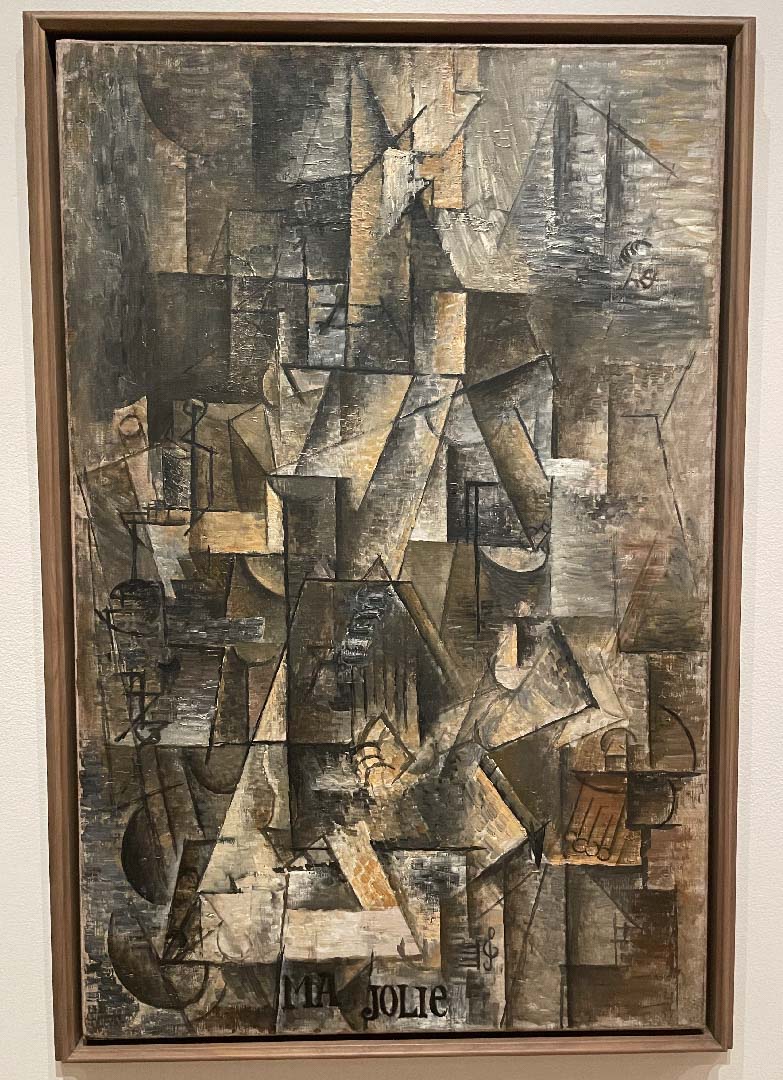
Ma Jolie (1912, Oil on canvas)
“I love her very much and I will write this in my paintings,” Picasso wrote in a letter about his lover Marcelle Humbert, who is depicted here. By inscribing “MA JOLIE” (my pretty one) on the bottom of this painting, the first of at least twelve works on which he did so, he privately referenced his nickname for Humbert while publicly alluding to the refrain of a popular music-hall song of the same name. These words, along with the treble clef and music staff, form a striking construct of the nearly indecipherable image of the figure, which disappears into a network of flickering, semitransparent planes.
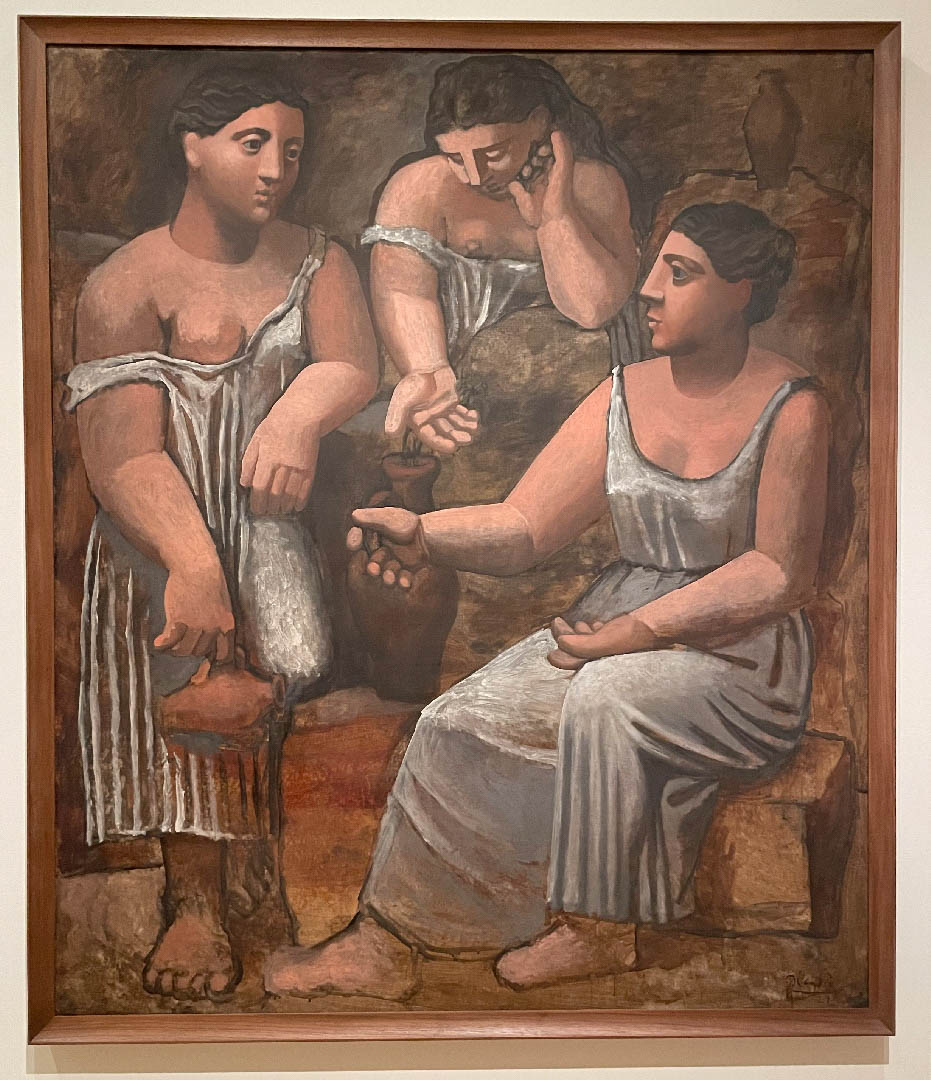
Three Women at the Spring (1921, Oil on canvas)
In this painting, the three classical graces gathered at a water source are depicted as a series of solid, sculptural forms that diverge from the modern language of flattened abstraction with which Picasso was also experimenting during this moment. With their terracotta skin and fluted white garments, the women resemble the earthenware vessels in which they gather water, or columns from the ancient world, offering a reassuring link to tradition after the chaos of World War I.
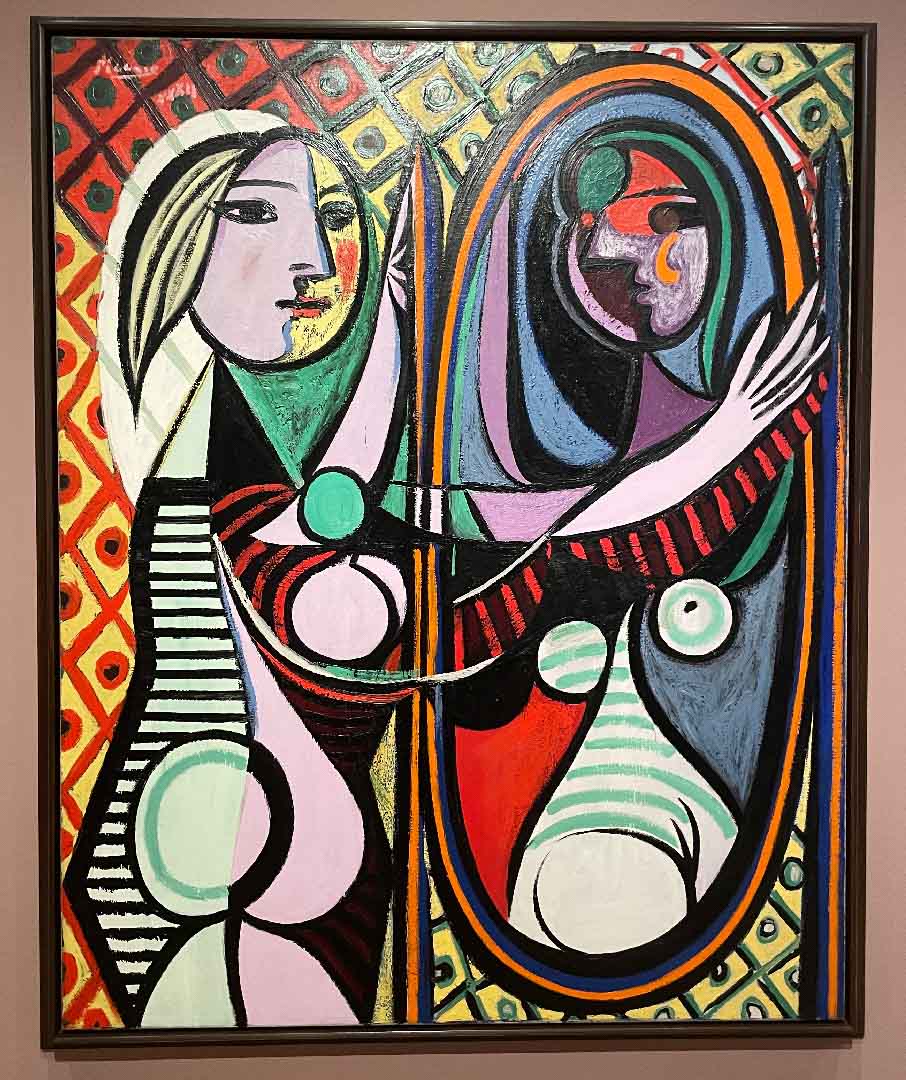
Girl Before A Mirror (1932, Oil on canvas)
Picasso explores the transcience of beauty and life.
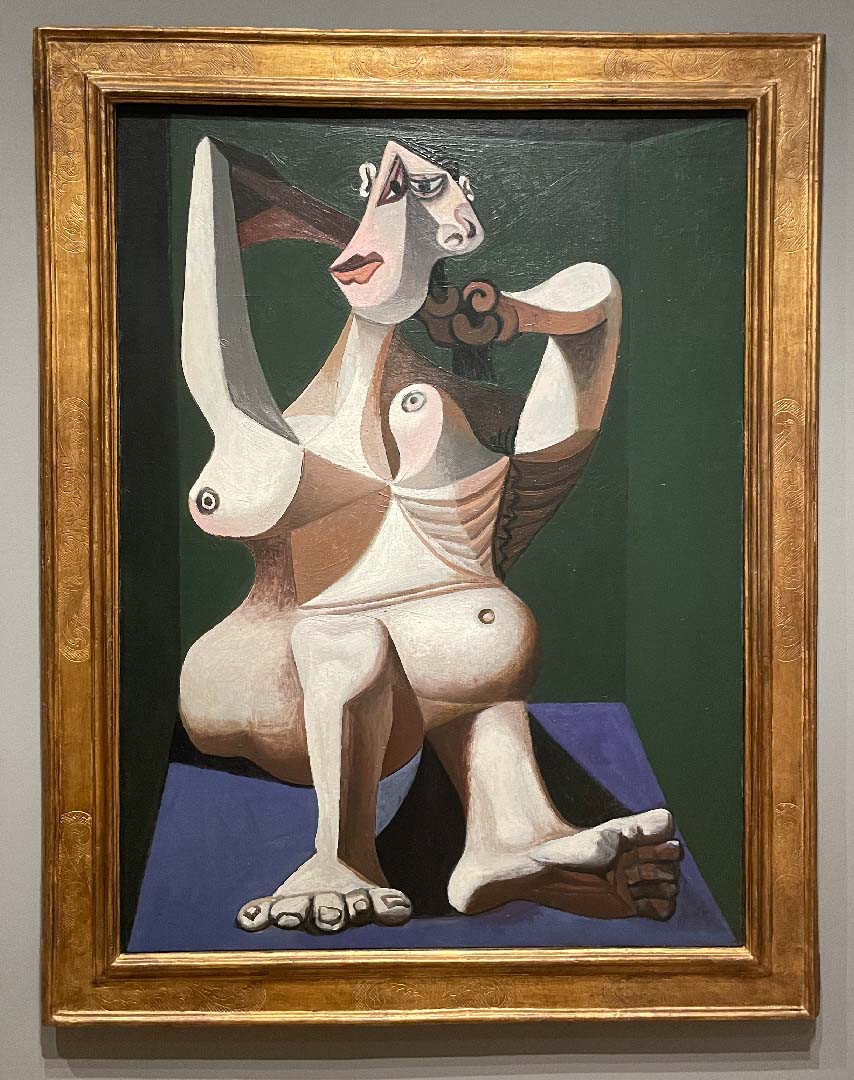
Woman Dressing Her Hair (1940, Oil on canvas)
Picasso created this work in the months prior to the German occupation of Royan, France, where he fled from Paris as the Nazis advanced across Europe. He depicted a woman inside a boxlike room barely bigger than her body; her massive figure is awkwardly compressed, and her contorted body juts this way and that. Transforming a familiar and typically serene subject in art history – a woman grooming herself – into a powerful grotesque, Picasso lent expression to the anxiety and confinement that attended this dark period.
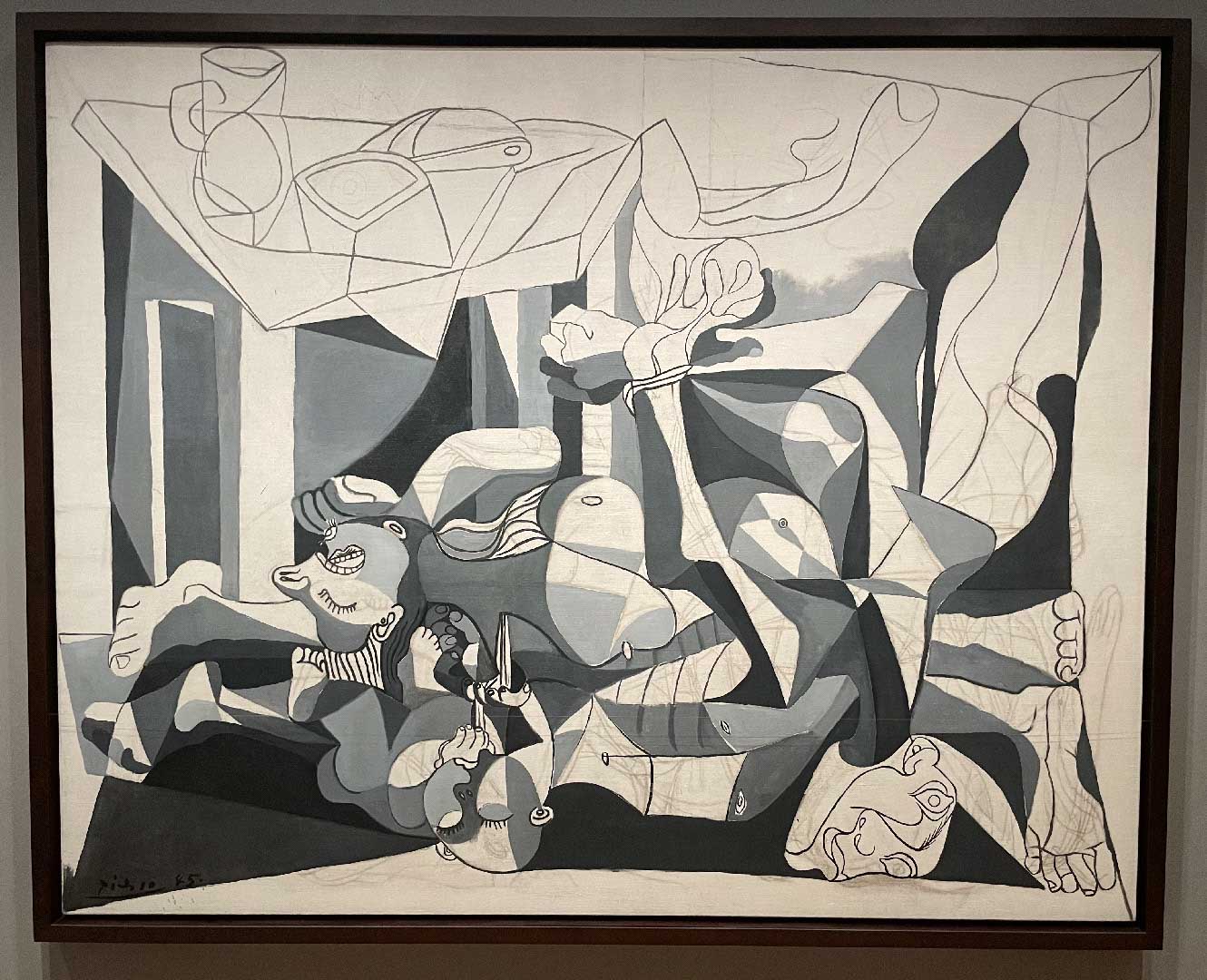
The Charnel House (1945, Oil and charcoal on canvas)
With its black-and-white tones, The Charnel House was inspired by newspaper photographs showing piles of corpses in liberated Nazi concentration camps. Picasso depicted a murdered family unceremoniously tangled together under a dining table. With its varying degrees of finish – you can see traces of charcoal and sections of a blank canvas – and vast network of undulating lines and geometric shapes, Picasso seems to have obscured legibility in favor of generating a rhythmic abstraction. As if questioning the ability of painting to represent war, he created a shifting, spectral vision.
Responding to War
“I have not painted the war,” said Pablo Picasso in 1944, “Because I am not the kind of painter who goes out like a photographer for something to depict.” In the months that followed, however, he began to work on The Charnel House, a monumental evocation of the horror of World War II. It is one of numerous searing, history-engaging works that artists of various nationalities in diverse circumstances created during the cataclysmic period that stretched from the rise of Nazism and other totalitarian regimes, in the 1930s, to the end of the war, in 1945.
Some, like José Clemente Orozco and David Alfaro Siqueiros, had always mixed art and politics. Others, like Picasso, felt newly compelled to use their art to confront the events unfolding across the world stage. In many cases, these artists found a modernist language of fractured forms well suited to conveying a reality contorted by violence and destruction.
Salvador Dalí
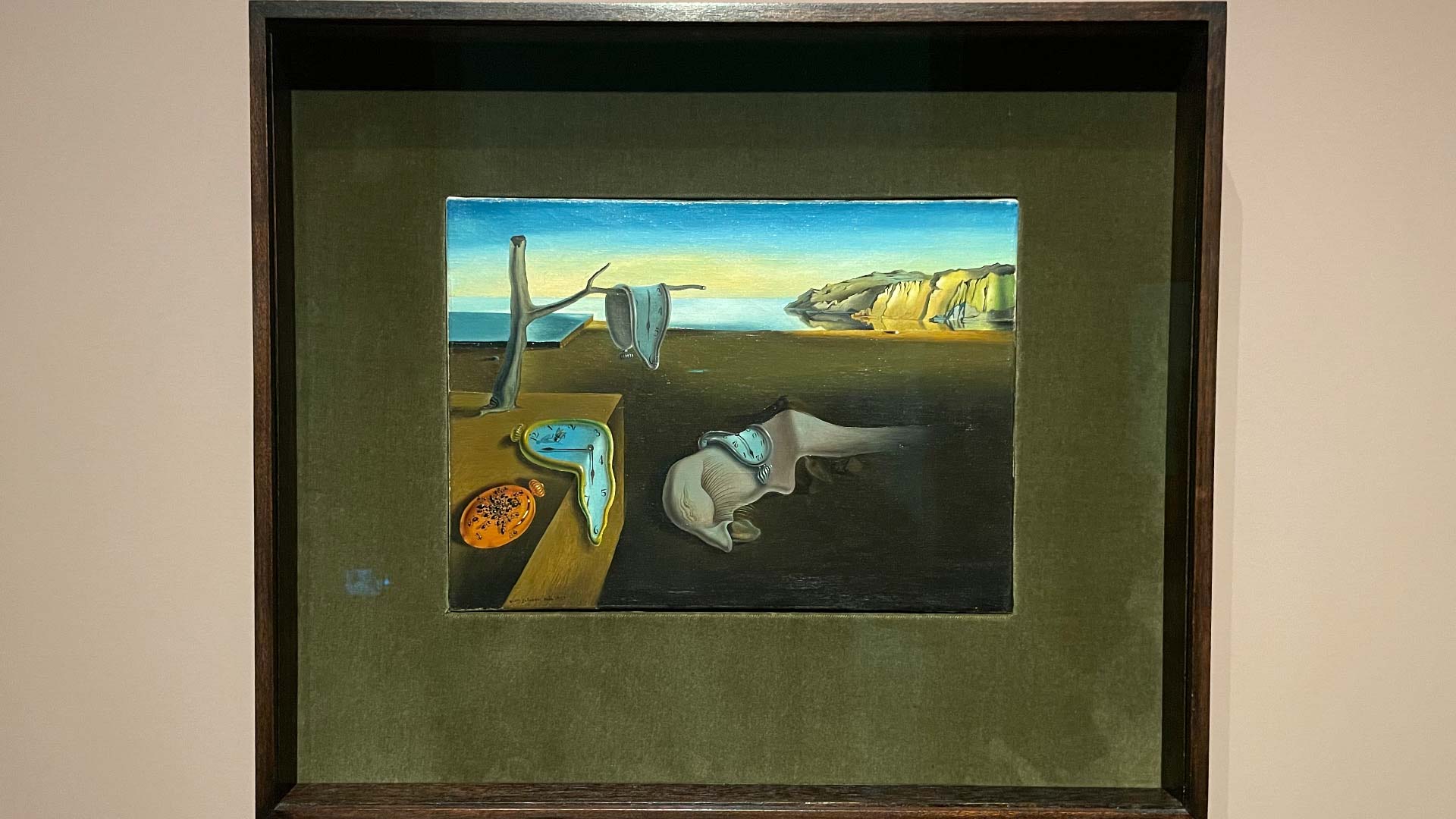
The Persistence of Memory (1934, Oil on canvas)
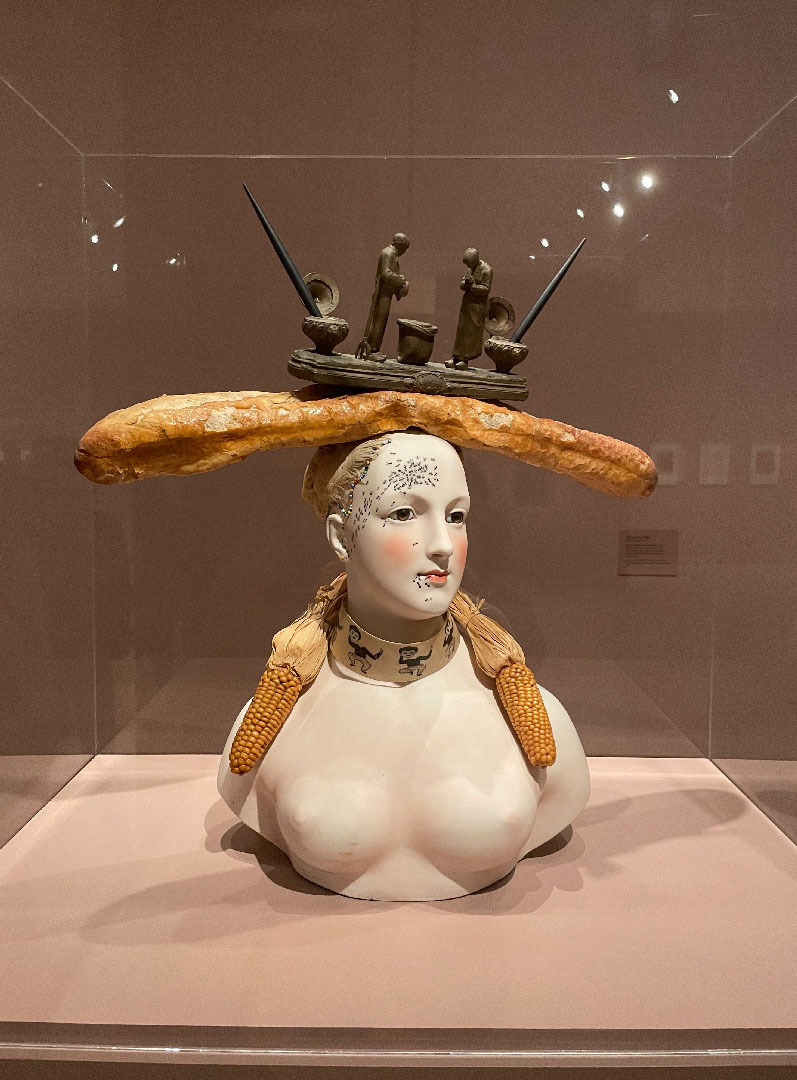
Retrospective Bust of a Woman (1933, Painted porcelain, bread, corn, feathers, paint on paper, beads, inkstand, sand, and two pens)
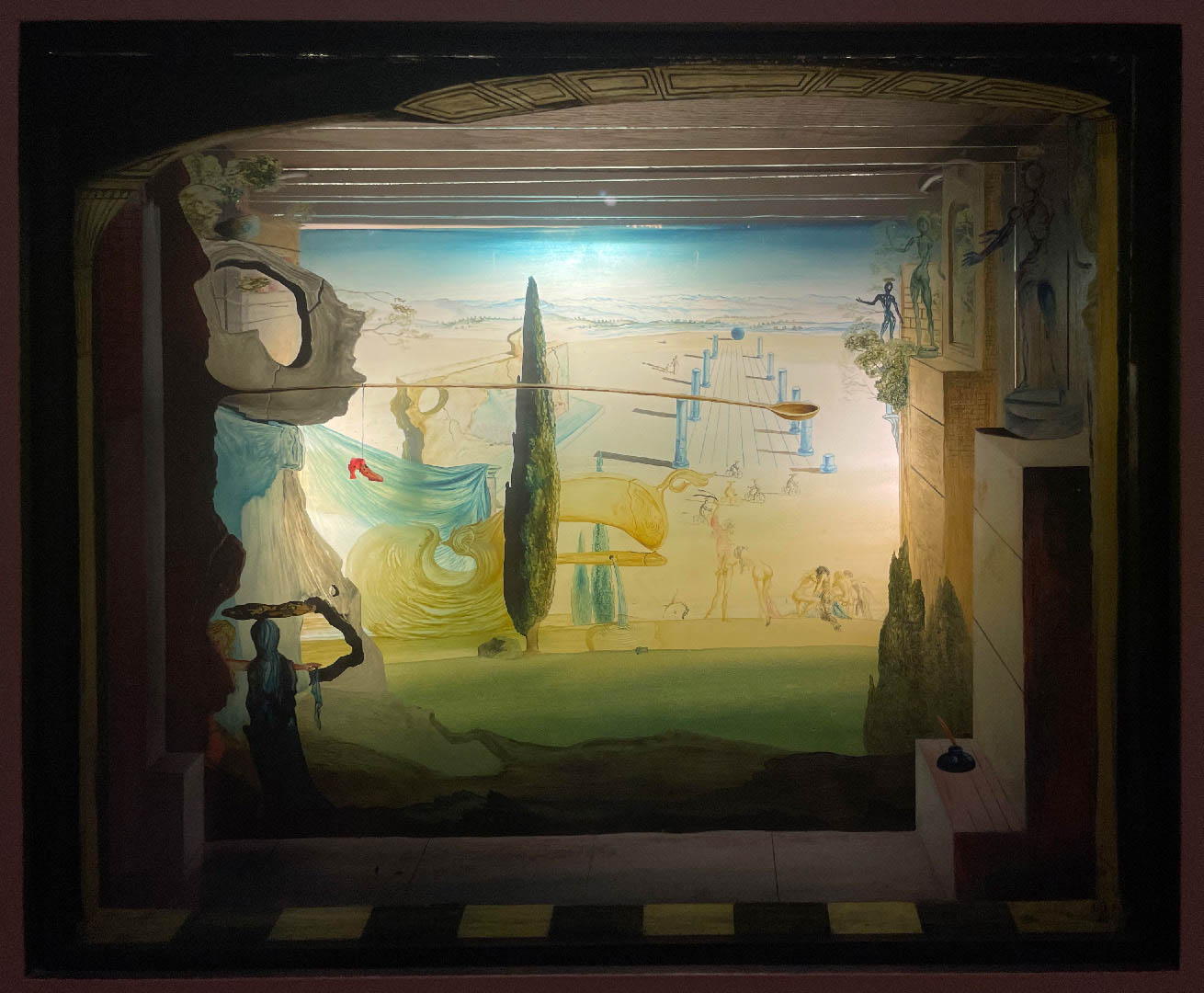
The Little Theatre (1934, Wood and glass, painted)
This illuminated, diorama-like construction contains eleven parallel painted glass panels. Both pictorial illusion and actual depth produce the sense of receding space, from the proscenium arch on the front panel to the sky on the furthest, with various bizarre objects, figures, and scenarios sandwiched in between.
This unusual work may have been Dalís attempt to recreate “a large square box” he had seen as a boy: “It was a king of optical theater, which provided me with the greatest measure of an illusion of my childhood. I have never been able to determine or reconstruct in my mind exactly what it was like.”
Frida Kahlo
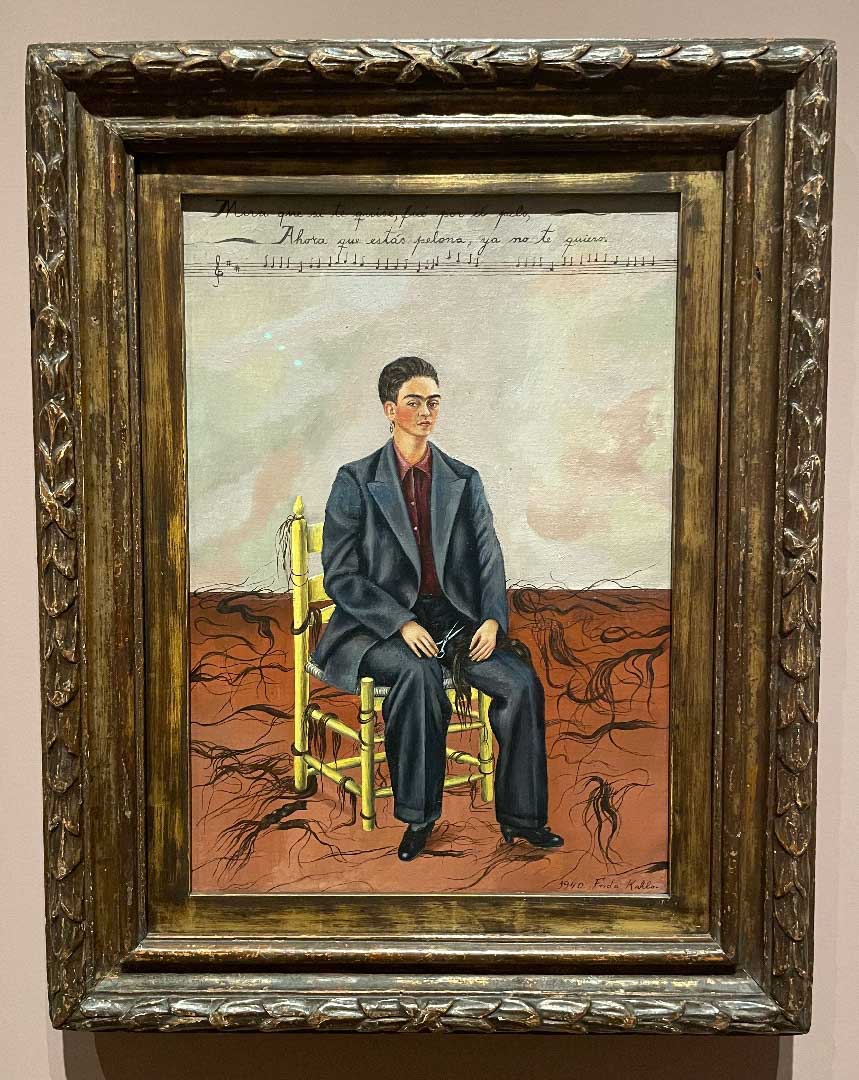
Self-Portrait with Cropped Hair (1940, Oil on canvas)
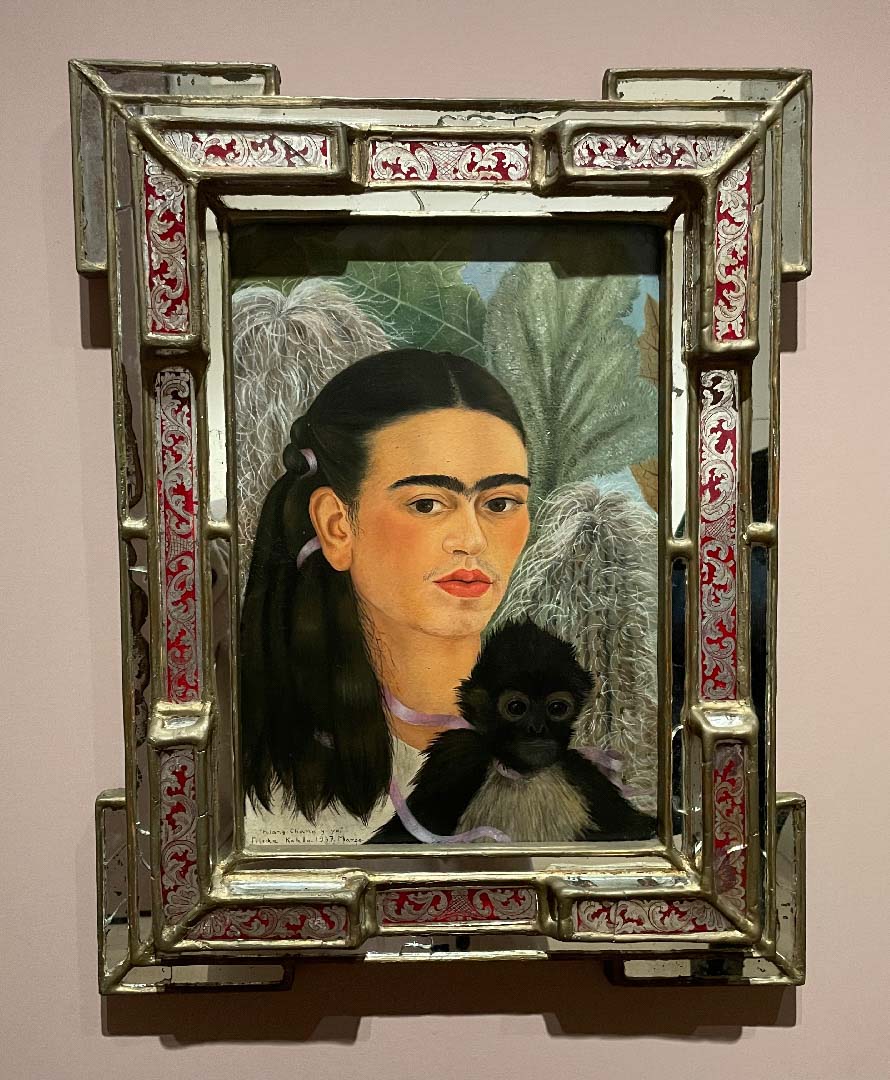
Fulang-Chang and I (1937, Oil on board)
Do you think it would be cool to have a pet monkey? Frida Kahlo had several spider monkeys that she kept as pets – the one in the painting is called Fulang-Chang. The pink ribbon that Kahlo painted around her neck connects her Fulang-Chang, showing how much she loved him. What other details do you notice?
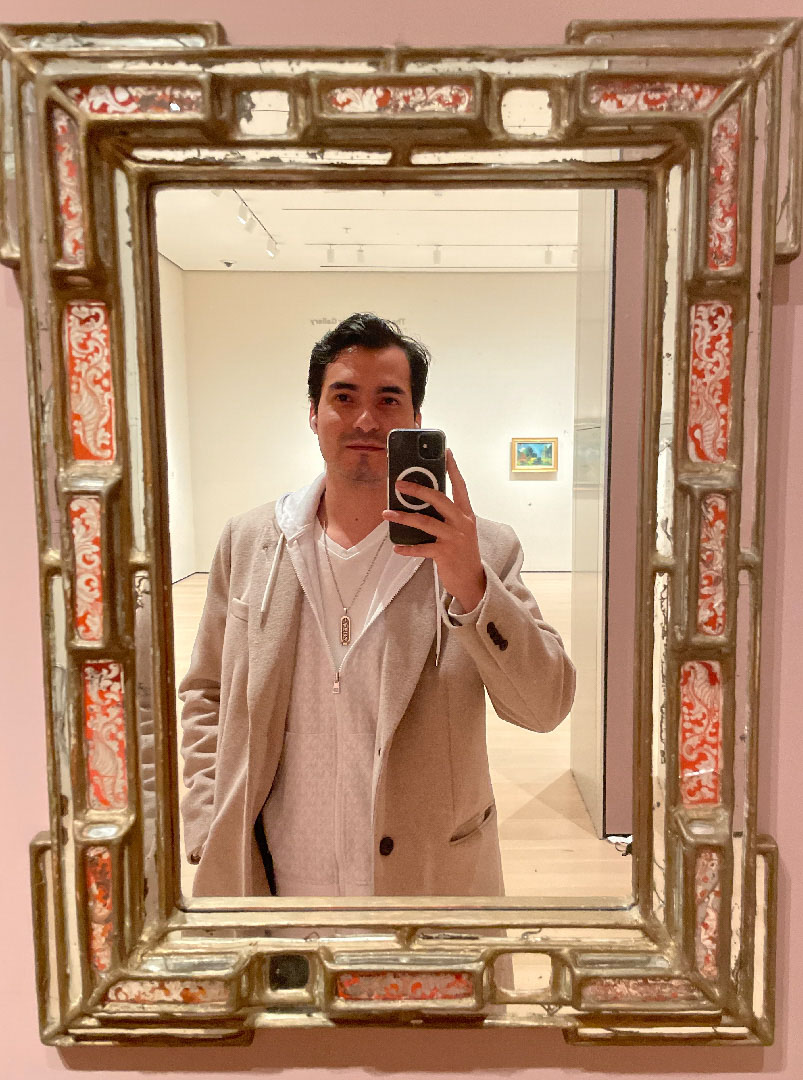
Beyond the Uniform: See yourself in Kahlo’s mirror.
Gustav Klimt
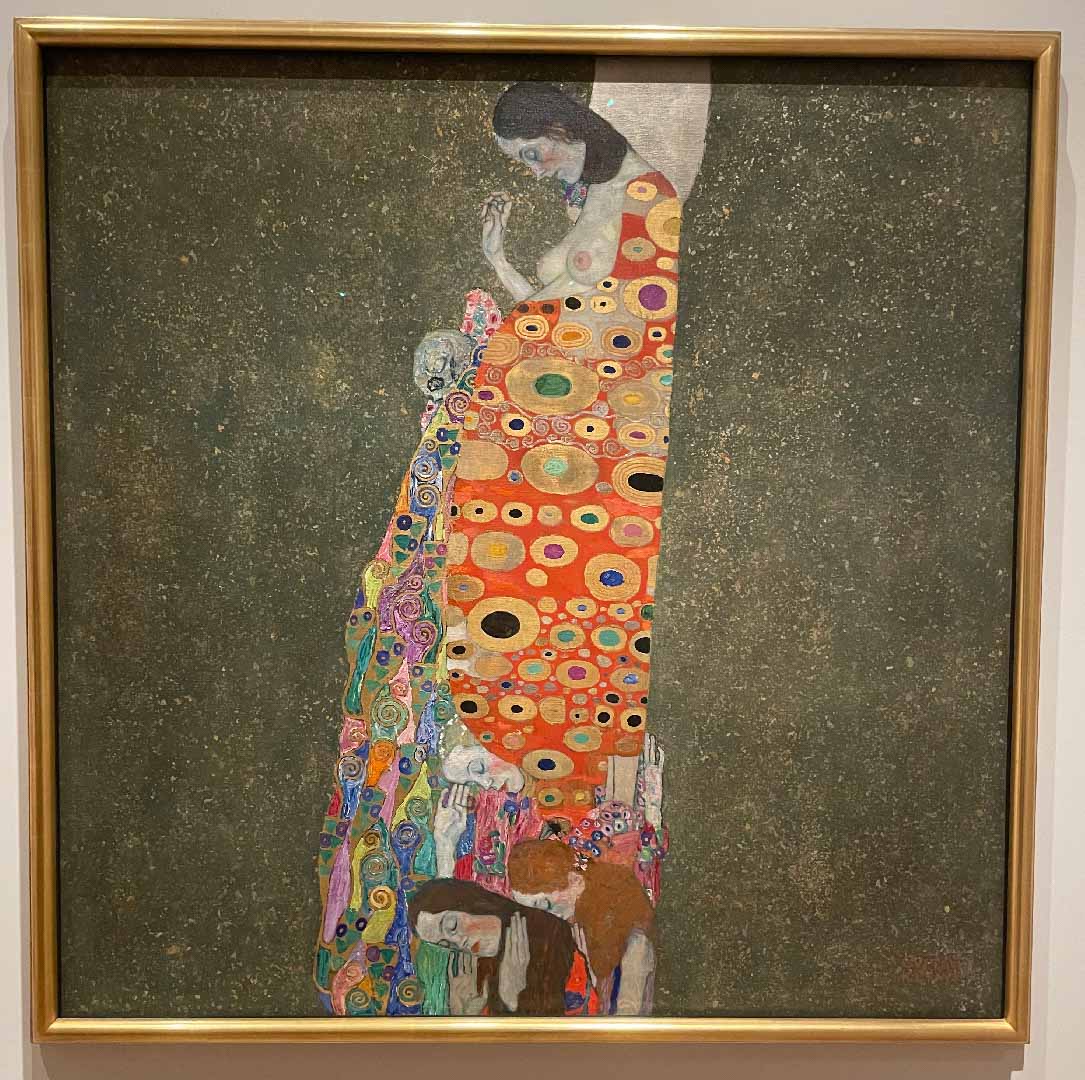
Hope, II (1908, Oil, gold, and platinum on canvas)
Although images of women and children are frequent in the history of art, depictions of pregnancy are rare. In Hope, II a woman with a skull nestled into her gown lowers her head toward her swelling belly. Below, three women also bow their heads in prayer or in mourning. Ornate decoration nearly overwhelms the painting’s surface.
Klimt was committed to craftwork, and he was among the many artists of his time who combined archaic traditions – here Byzantine gold-leaf painting – with a modern psychological subject. Klimt lived and worked in turn-of-the-century Vienna, home to Sigmund Freud, the father of psychoanalysis; the artist’s preoccupation with formative drives like sex and death paralleled Freud’s Explorations of the psyche.
Wassily Kandinsky
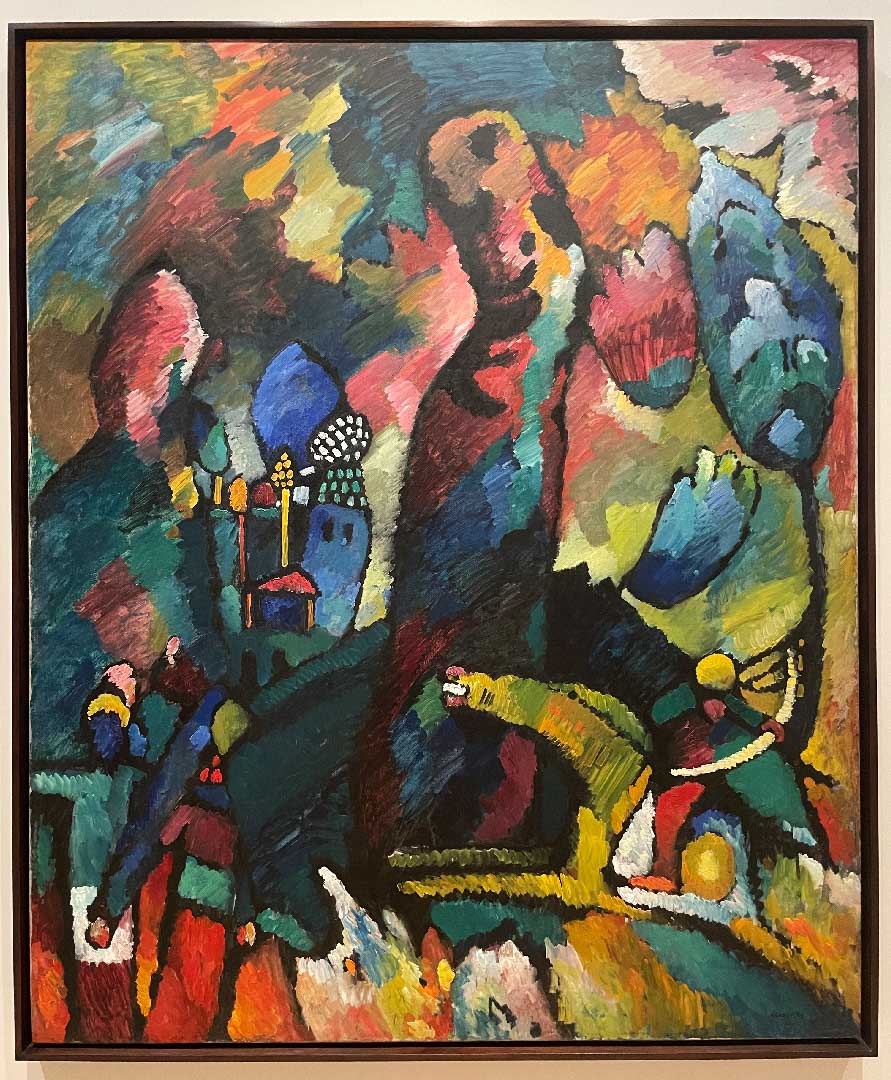
Picture with an Archer (1909, Oil on canvas)
This painting’s vibrant colors almost obscure its subject. At the lower right, an archer on horseback leaps through a radiant landscape of towering trees and rock formations. Men in Russian dress stand in the left foreground; behind them is a group of building with onion-shaped domes.
This folkloric scene evokes Kandinsky’s native Russia, and it also bears the influence of Murnau, the southern German town where the artist lived when he made this work: the black outlines enclosing bright colors recall reverse glass painting, a local craft. “Color,” Kandinsky wrote a year later, “is a power which directly influences the soul.”
Circle and Square, Joaquín Torres-García and Piet Mondrian
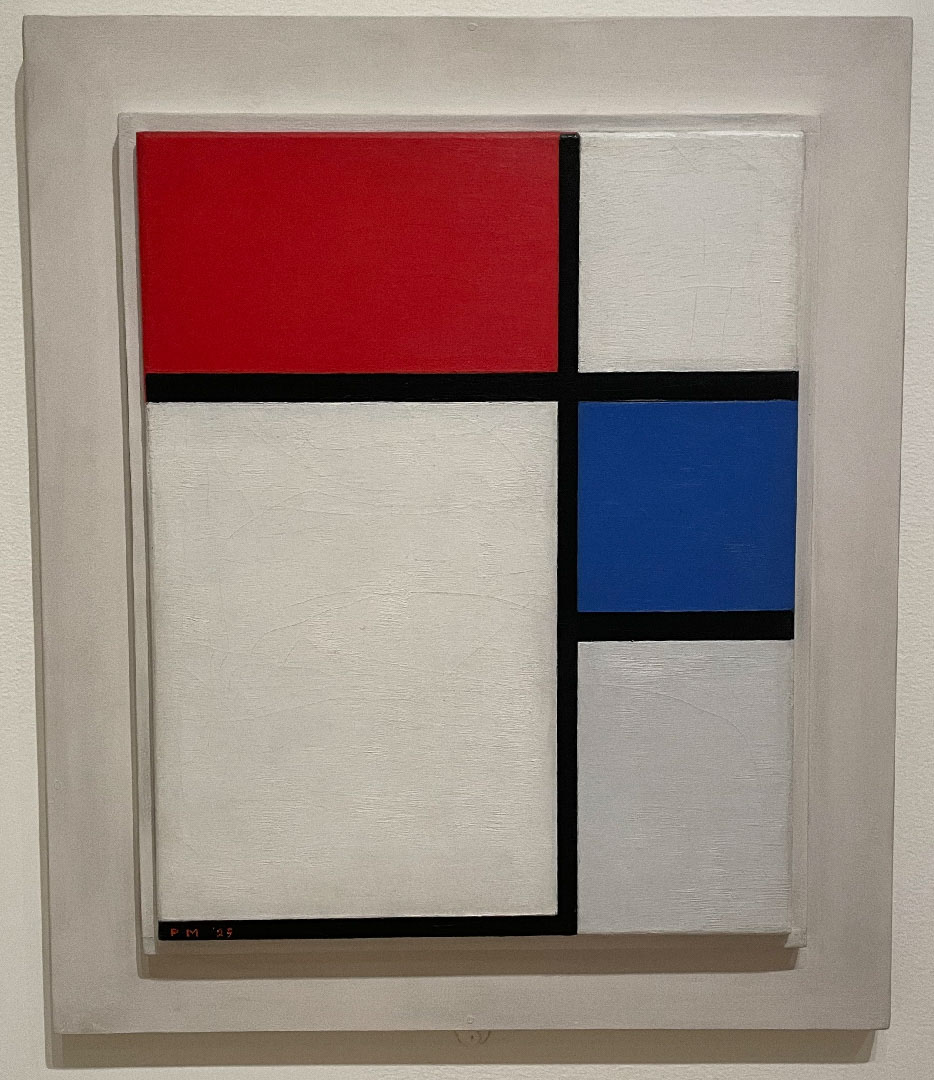
Composition No. II, with Red and Blue (1929, Oil on canvas)
Joaquín Torres-Garcia and Piet Mondrian met in Paris in 1929 and, together with the Belgian artist and writer Michel Seuphor, founded the group Cercle et Carré (Circle and Square). More than eighty artists from Europe and the Americas working in abstraction came together in this coalition.
They advocated a geometric, analytical approach to art making, which they conceived in opposition to Surrealism’s focus on the unconscious and irrational. Key was the notion of “construction,” or logically building a work of art based on, in Torres-Garcia’s formulation, “the search for equilibrium, for unity, equivalent relationships between forms, planes, colors, between the simple elements that compose the work of art.”
Cercle et Carré edited a magazine of the same name and held one exhibition before it disbanded in 1930. The notion of construction versus the irrational proved important for a generation of artists in South America during the following decades.
Henri Matisse
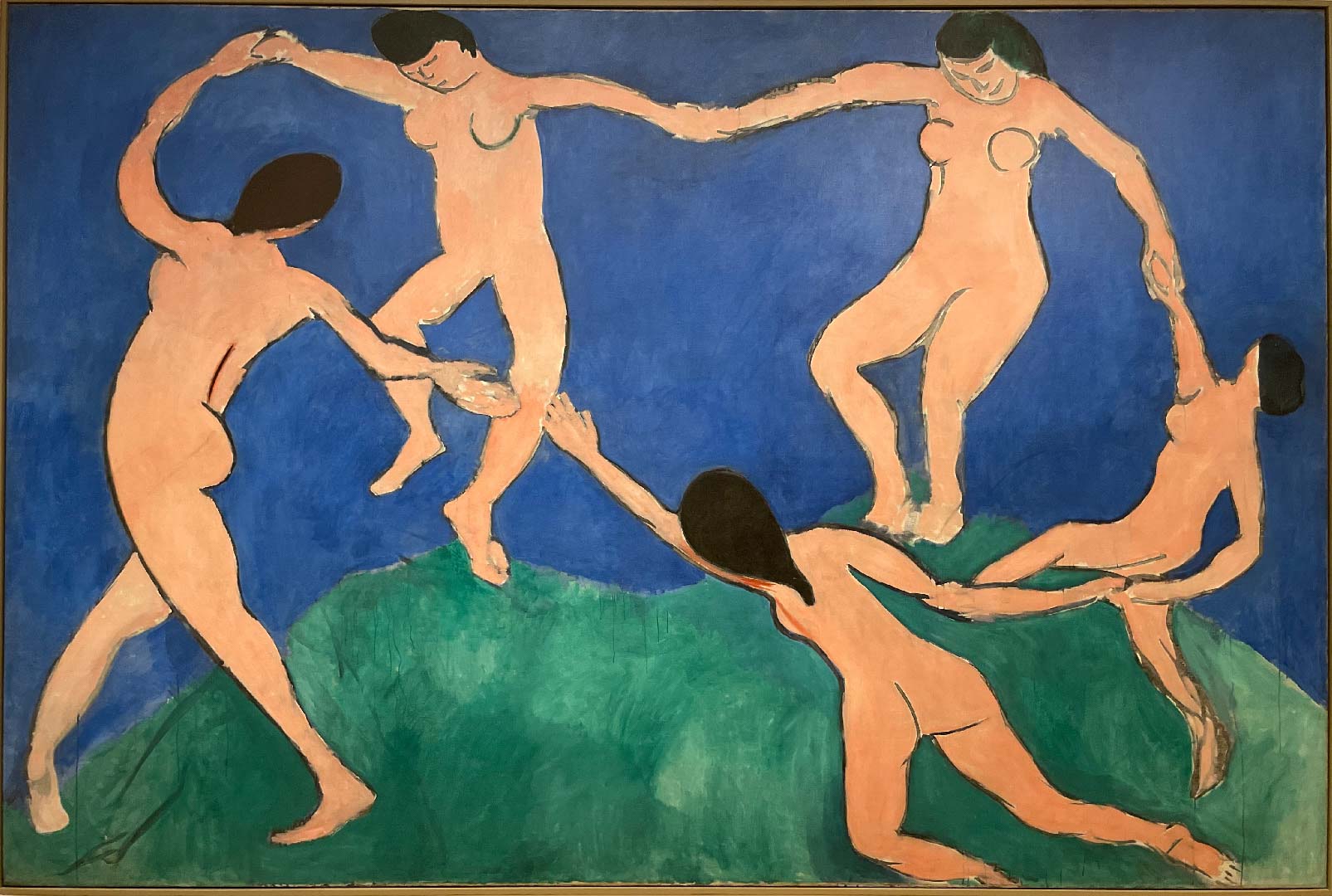
Dance (I) (19o9, Oil on canvas)
In March 1909, Matisse received a commission from the Russian businessman and collector Sergei Shchukin for two large decorative panels, Dance and Music (now in the Hermitage Museum, St. Petersburg). He made this painting quickly as a compositional study for Dance, which was intended to hang on the landing of a staircase in Shchukin’s home. When it was painted, its simplification of the human body and radical elimination of perspective were attacked as inept or willfully crude, but Matisse felt that it evoked “life and rhythm.”
Van Gogh
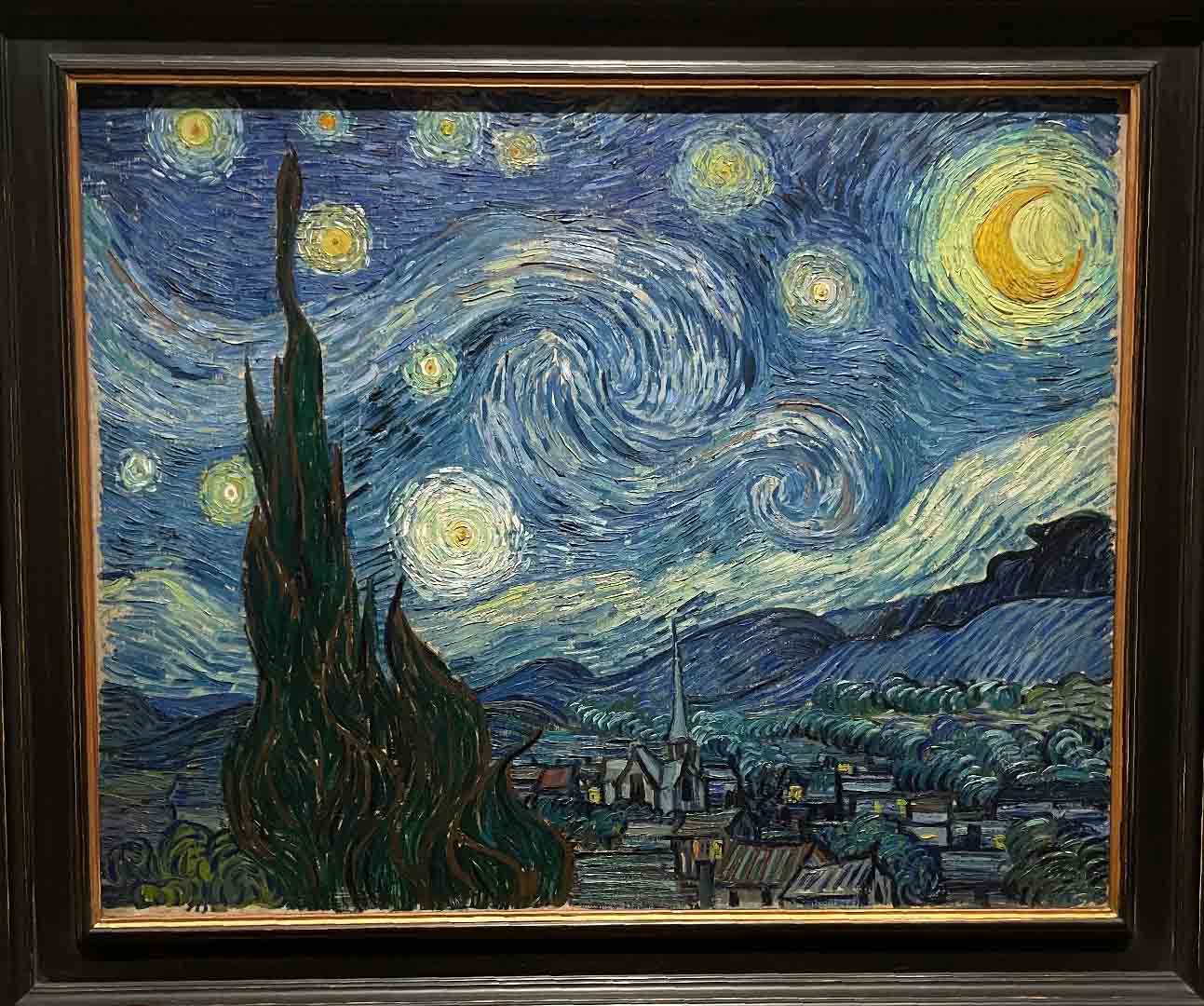
The Starry Night (1889, Oil on canvas)
This painting was inspired by the artist’s view from his window at the Saint-Paul-de-Mausole asylum in Saint-Rémy, in south France, where he spent twelve months in 1889-90 seeking reprieve from his mental illnesses. Although this is a nocturnal scene, he created it in several sessions during the day.
The village nestled below the hills was based on views that could not be seen from his window, and the cypress at left appears much closer than it was. Van Gogh assigned an emotional language to night and nature that took them far from their actual appearances, applying vivid blues and yellow with gestural verve and immediacy.
Claude Monet’s Water Lilies
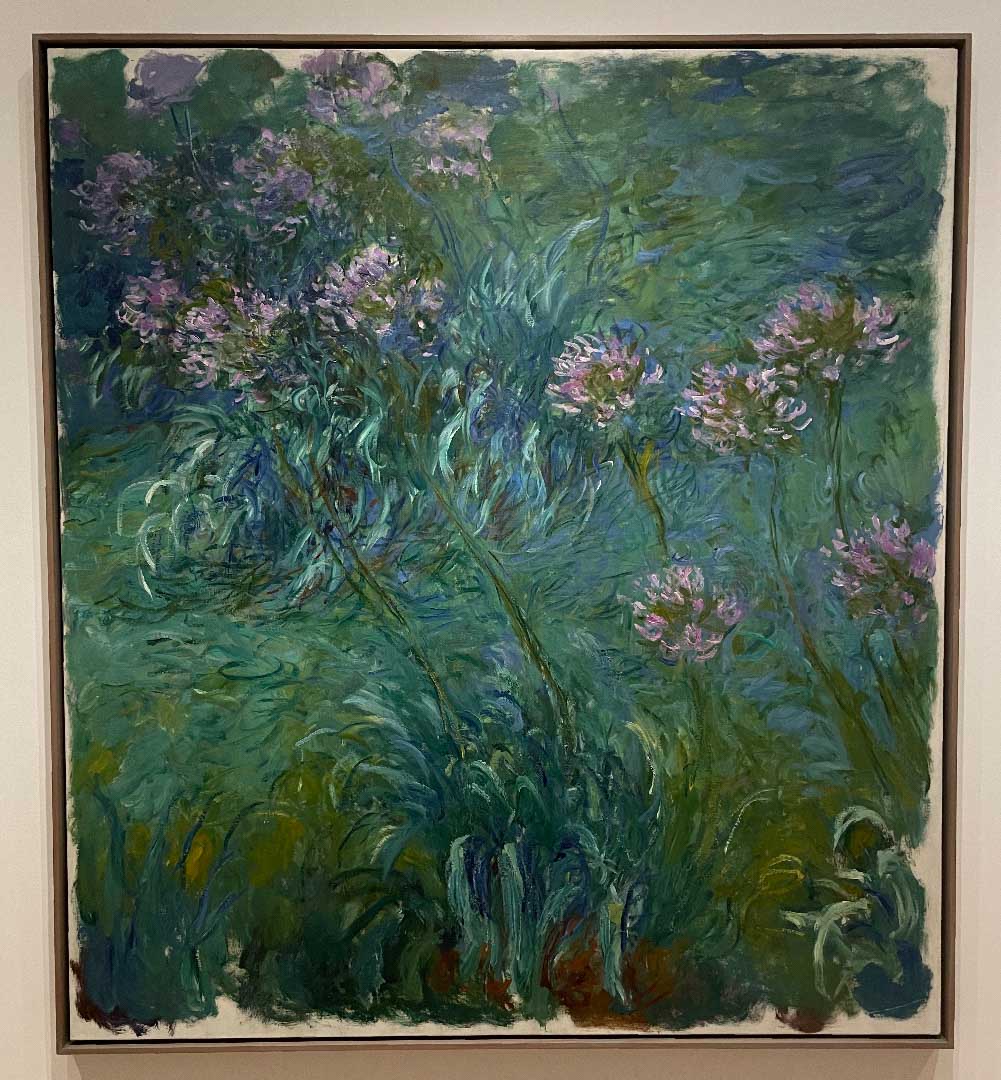
In 1915 Claude Monet built a large studio near his house in Giverny, a town northwest of Paris, for the creation of what he could call his grandes décorations. These works depict the elaborate lily pond and gardens that Monet had created on his property. He captured this subject matter in more than forty large-scale panels and scores of smaller related canvases between 1914 and 1926, the year of his death.
In 1955 The Museum of Modern Art became the first museum in the United States to acquire one of the large-scale panels. MoA curators’ interest in Monet at that time had much to do with currents in contemporary art: the grand scale and allover compositions of Abstract Expressionists paintings by artists such as Jackson Pollock made Monet’s large paintings newly relevant. Since then the Water Lilies have held a cherished position in the Museum affirming Monet’s conviction that art can provide a respite from an increasingly urban, commercialized, and technological world.
Closing Thoughts
I will always revisit the MoMA during different seasons to see new and old artwork being exhibited. What did you think of some of the MoMA art museum’s collections?
More Treasures to Discover
Learn about the latest news in El Salvador through Walkway, a free extension developed for Google Chrome and Microsoft Edge. Enjoy photographs of El Salvador, taken by national photographers, every time you open a new tab. The Walkway extension is perfect for locals, tourists, and people who love to travel. It’s also a portal to continue enjoying the content on Life’s Hectic.




